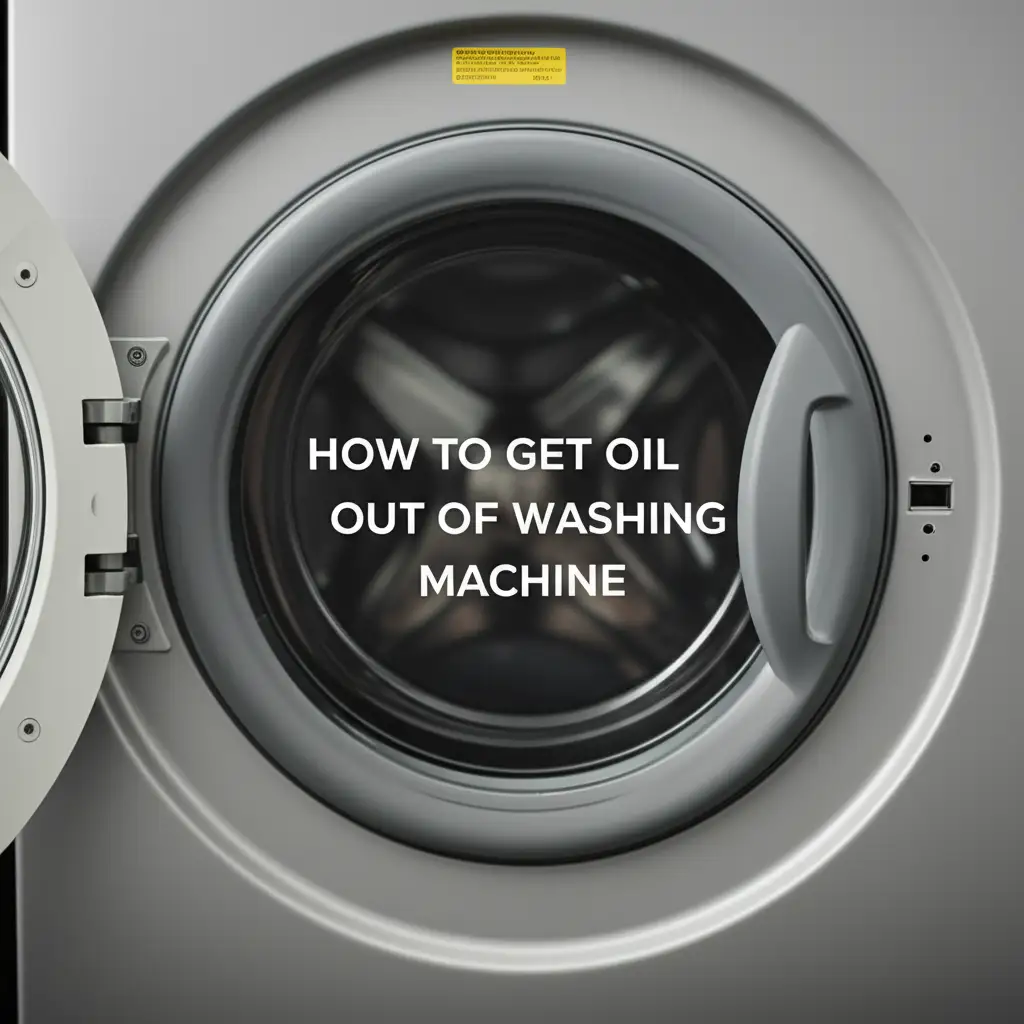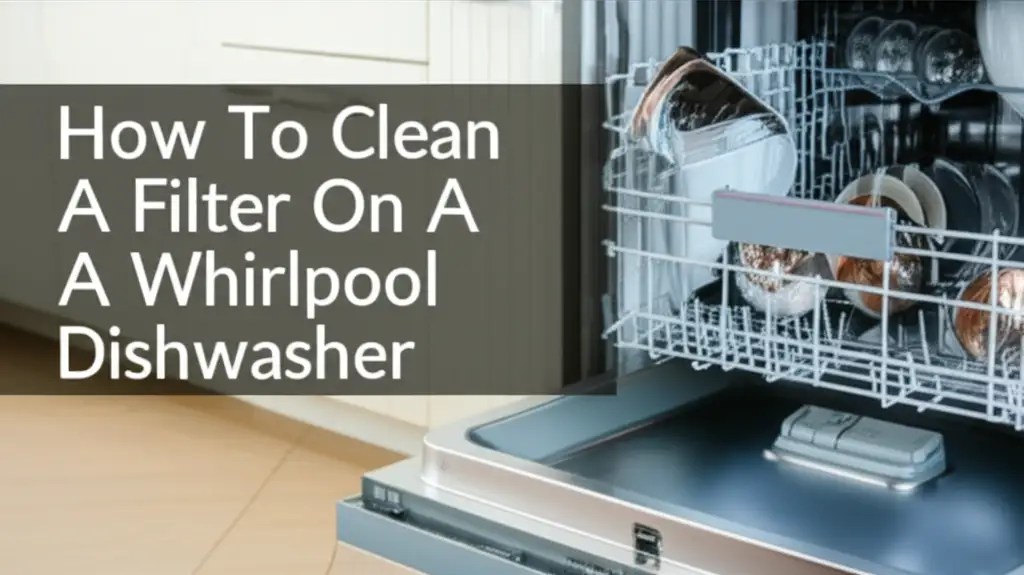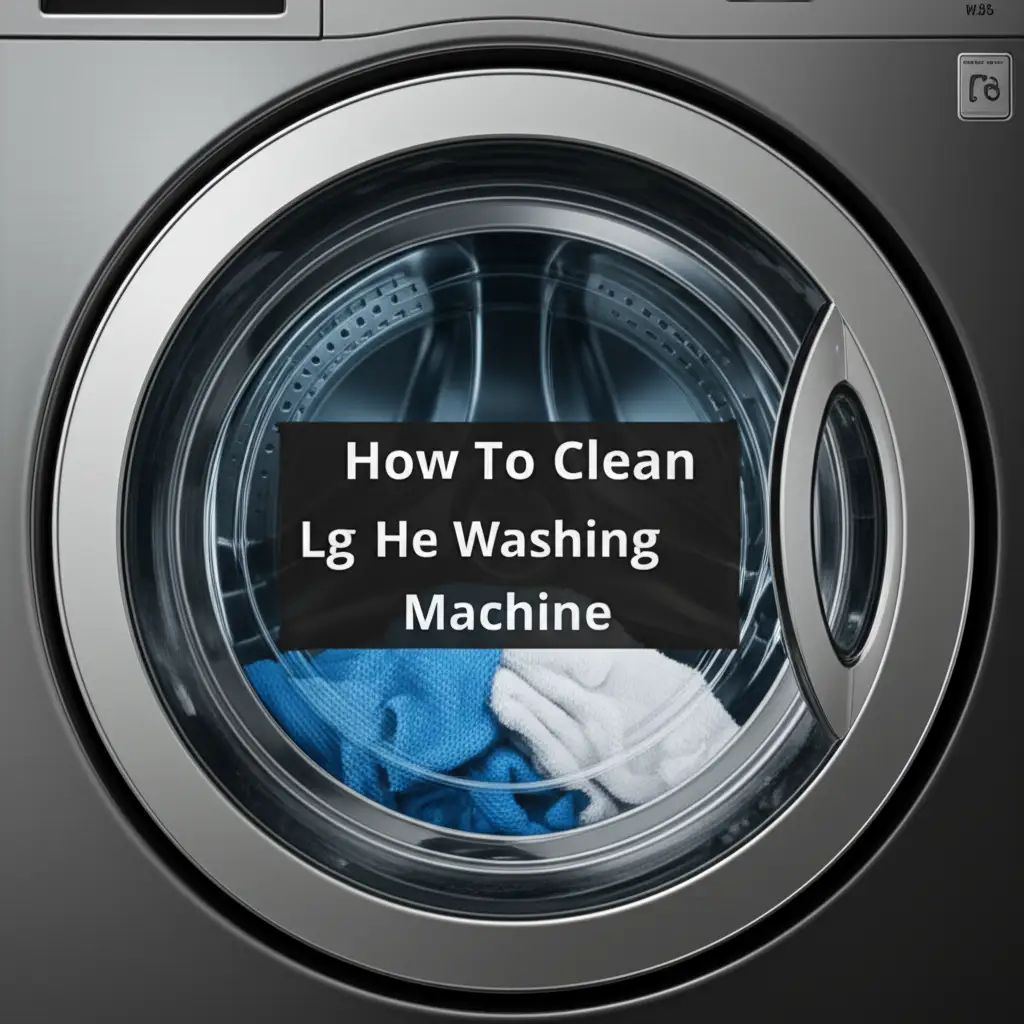· Elira Thomsen · Appliance Maintenance · 16 min read
How To Get Oil Out Of Washing Machine

How To Get Oil Out Of Washing Machine
Finding oil in your washing machine can feel like a major problem. You put clothes in hoping for them to get clean. Instead, they come out with greasy marks. This can happen from a variety of sources. It often leaves you wondering what to do next. My goal is to help you fix this issue.
Dealing with oil residue is important. It can transfer to other laundry items. It can also cause odors inside your machine. I will show you how to get oil out of washing machine thoroughly. This guide covers immediate steps. It also covers deep cleaning and future prevention.
Takeaway
- Stop the cycle immediately if you notice oil.
- Remove all clothing from the machine.
- Use specific cleaning agents for oil, like dish soap or degreaser.
- Clean the drum, seals, dispenser, and filter.
- Run hot wash cycles with cleaners to flush the machine.
- Pre-treat oily items before washing to prevent future issues.
- Clean your machine regularly to maintain its condition.
To get oil out of your washing machine, first remove all clothes. Then, apply a degreasing agent like dish soap or a specialized cleaner to the drum. Run a hot water cycle with the cleaner. Clean the dispenser, seals, and filter manually. Repeat the hot wash cycle if needed to ensure all oil is gone.
Understanding the Oil Problem in Your Washing Machine
Oil in your washing machine can be a real headache. It affects your laundry and your appliance. People often wonder how oil gets there in the first place. This problem usually starts with oily clothes. Examples include work uniforms, kitchen rags, or even clothes with food grease.
Different types of oil can cause this issue. Cooking oil, motor oil, and even body oils are common culprits. These substances do not mix well with water. They often stick to surfaces inside your washing machine. This creates a greasy film.
This oil film can damage your clothes. It leaves stubborn stains on fabrics. It also creates a breeding ground for bacteria. This leads to unpleasant smells inside the machine. Over time, oil buildup can affect machine performance.
It can clog hoses or filters. This makes your washer less efficient. Cleaning the oil out protects both your laundry and your machine. It keeps your home environment healthy. Ignoring the problem will only make it worse.
My own experience showed me how persistent oil can be. I once washed a mechanic’s uniform. It left a greasy film inside my machine. I had to learn the hard way to remove it. You can avoid this by understanding the problem. Knowing the cause helps you choose the right solution.
Immediate Steps When You Discover Oil
Discovering oil in your washing machine can feel alarming. Your first reaction might be to panic. Do not worry. Taking immediate action can limit the damage. It helps to contain the oil before it spreads further.
The very first step is to stop the washing cycle. If the machine is running, pause it. Turn it off if possible. You want to prevent the oil from circulating more. This stops it from contaminating more items.
Next, carefully remove all items from the washing machine. Take out the oily clothes. Also remove any other garments that were in the cycle. They may have absorbed some oil. Do not put these clothes in the dryer. Heat will set the oil stains.
Inspect the inside of the washing machine drum. Look for visible oil slicks or residue. You might see a rainbow-like sheen on the water. You might see actual oil droplets on the drum walls. This confirms the presence of oil.
Use paper towels or old rags to wipe up as much oil as you can. Do not use your good towels. Oil will transfer easily. Dispose of the oily rags properly. Do not wash them with other laundry items. This initial wipe-down removes surface oil. It makes deeper cleaning easier.
I found that quick action saves a lot of trouble. Once, I noticed a strong grease smell mid-cycle. I stopped the machine right away. This prevented more clothes from getting ruined. It also made the cleanup faster.
Effective Cleaning Agents for Oil Removal
Choosing the right cleaning agent is crucial. Not all cleaners work well on oil. Some can even make the problem worse. You need products that break down grease. These products help lift the oil away.
Dish Soap: This is often the first and best choice. Dish soap is designed to cut through grease. It works wonders on oil stains. Use a small amount of liquid dish soap. High-sudsing varieties are very effective.
- Apply dish soap directly to oily spots in the drum.
- Use a cloth to spread it.
- Let it sit for a few minutes.
Degreasers: Household degreasers are powerful. They are made for tough grease. You can find them in the cleaning aisle. Follow product instructions carefully. Some degreasers are stronger than others.
- Spray the degreaser on affected areas.
- Allow it to penetrate the oil.
- Wipe away with a clean cloth.
Baking Soda: This is a natural absorbent. Baking soda helps soak up oil. It also neutralizes odors. This makes it a great choice for lingering smells.
- Sprinkle baking soda over the oily areas.
- Let it sit for 15-30 minutes.
- Wipe away the paste formed.
White Vinegar: Vinegar is an acid. It helps break down greasy residues. It also disinfects and removes odors. White vinegar is safe for most machines.
- Pour a cup or two into the detergent dispenser.
- Run a hot cycle.
- You can also mix it with baking soda for a scrubbing paste.
I once used a combination of dish soap and vinegar. This worked well for a particularly stubborn grease spill. The dish soap tackled the oil. The vinegar cleaned and deodorized the machine. This dual approach gives the best results. For tips on cleaning other oil stains, you might find this article helpful: How to Get Peanut Oil Out of Carpet.
Step-by-Step Guide to Cleaning Your Washing Machine Drum
Cleaning the drum is essential. This is where most of the oil residue collects. A thorough cleaning prevents oil from contaminating future loads. It also keeps your machine smelling fresh.
1. Empty the Machine Completely: Make sure no clothes or items are left inside. The drum must be empty for cleaning. This allows the cleaning agents to work directly on the oil.
2. Prepare Your Cleaning Solution: For light oil, a cup of dish soap is fine. For heavier oil, use a cup of a strong liquid degreaser. You can also combine half a cup of baking soda with two cups of white vinegar. Pour your chosen solution directly into the drum.
3. Run a Hot Water Cycle: Set your washing machine to the hottest water setting. Choose the largest load size. Select a heavy-duty cycle or a cleaning cycle if your machine has one. Hot water helps melt the oil. It allows the cleaner to break down grease more effectively. Do not add any clothes to this cycle.
4. Pause the Cycle (Optional but Recommended): Let the machine fill with hot water and cleaner. Then, pause the cycle for 30 minutes to an hour. This allows the cleaning solution to soak into the oil residue. It gives it more time to dissolve the grease.
5. Complete the Cycle: After soaking, unpause the cycle. Let it run to completion. This flushes out the oil and cleaning solution. The dirty water will drain away.
6. Wipe Down the Drum: Once the cycle finishes, open the machine door. Use a clean cloth or paper towels. Wipe down the inside of the drum. Pay attention to any remaining oily spots. Ensure all visible residue is gone.
7. Run a Rinse Cycle: Run a quick rinse cycle with plain hot water. This removes any leftover cleaner. It ensures no residue remains inside the machine. This step is important for front-loaders. You can also run a second empty hot cycle for extra peace of mind.
I recommend running an empty cycle with vinegar once a month. This prevents oil and soap scum buildup. It keeps the drum clean. Regularly cleaning your washing machine agitator or drum helps maintain its performance. You can find more information on this process here: How to Clean Washing Machine Agitator.
Cleaning Oil Residue from Machine Components
The drum is not the only place oil can hide. Other parts of your washing machine also collect residue. These parts need specific attention. Ignoring them can lead to lingering smells or re-contaminating your laundry.
1. The Rubber Seal (Gasket): Front-loading washing machines have a rubber gasket. This seal around the door can trap oil. It often grows mold or mildew too.
- Pull back the folds of the gasket.
- Use a cloth dipped in hot, soapy water.
- Wipe away all oil and grime.
- For stubborn spots, use a toothbrush.
- Rinse with clean water.
- Dry the gasket thoroughly to prevent mold.
2. Detergent Dispenser Drawer: Oil can mix with detergent. This creates a sticky mess in the dispenser. This part also needs regular cleaning.
- Remove the dispenser drawer. Most drawers slide out easily.
- Soak the drawer in a basin of hot, soapy water.
- Use a small brush or old toothbrush to scrub away residue.
- Rinse it well under running water.
- Wipe down the compartment where the drawer sits. This area can also collect grime.
- Return the clean dispenser drawer.
Knowing how to use your dispenser properly helps prevent this. For more on how to use your machine’s parts, see: What Goes Where in a Washing Machine.
3. Drain Filter: Many washing machines have a drain filter. This filter catches lint, small items, and even oil residue. It is usually at the bottom front of the machine.
- Place a shallow pan or towel under the filter. Water will drain out.
- Unscrew or open the filter access door.
- Carefully remove the filter.
- Clean any lint, debris, or oil off the filter under running water.
- You might need a small brush for stubborn residue.
- Wipe out the filter housing.
- Replace the filter securely.
4. Hoses and Internal Pipes: Oil can travel through these parts. While you cannot easily clean them manually, running hot cycles with cleaners helps. The high heat and degreasers flush out residue. Consider a washing machine cleaning tablet for deep pipe cleaning.
I check my drain filter every few months. I found hair, lint, and even a few coins there. This simple step prevents drainage problems. It also keeps oil from building up in the system. If you need to access internal parts, this might be useful: How to Remove Middle Part of Washing Machine.
Preventing Oil Buildup and Stains in the Future
Prevention is better than cure. Once you clean the oil out, you want to keep it out. Establishing good habits helps your machine stay clean. It also protects your clothes from future oil stains.
1. Pre-Treat Oily Clothes: This is the most important step. Always treat heavily oily items before washing them. Do not put them directly into the machine.
- Scrape off any excess oil.
- Apply a dish soap or a specialized stain remover directly to the oily spot.
- Rub it gently into the fabric.
- Let it sit for 15-30 minutes. This allows the cleaner to break down the oil.
- Rinse the item by hand before putting it in the washer.
2. Wash Oily Items Separately: If you have several oily items, wash them in a separate load. Do not mix them with regular laundry. This prevents oil transfer. It also keeps your main laundry load clean. Use extra detergent for these loads.
3. Use Hot Water for Oily Loads: Hot water helps dissolve oil. For very greasy items, use the hottest water setting the fabric allows. Always check garment care labels first. Hot water ensures oil is properly emulsified and washed away.
4. Avoid Overloading the Machine: An overloaded washing machine cannot clean effectively. Clothes do not agitate well. Dirt and oil may not rinse out properly. This leaves residues behind. Load your machine only to its recommended capacity.
5. Clean Your Machine Regularly: Establish a routine for cleaning your washing machine. A monthly cleaning cycle helps prevent buildup. Use a dedicated washing machine cleaner. You can also use a mixture of white vinegar and baking soda. This keeps the drum and hoses clear of residue.
6. Wipe Down After Each Use: After each wash, wipe the inside of the drum. Pay attention to the rubber gasket. This simple habit removes moisture and tiny residues. It stops oil and mold from settling.
My laundry routine changed after the oil incident. I now always pre-treat my husband’s work clothes. I also run an empty hot cycle with vinegar every month. These small changes save me a lot of time and effort later on.
Dealing with Oil-Stained Clothes After Machine Contamination
Sometimes, oil gets on clothes even after cleaning the machine. This can happen if residue was still present. It can also happen if the initial oil item was not pre-treated. Do not despair. You can often save these clothes.
1. Do Not Dry the Clothes: Heat sets oil stains. If you put oily clothes in a dryer, the stain becomes almost impossible to remove. Air-dry them instead. You can also check for stains before drying.
2. Pre-Treat the Stains: Apply liquid dish soap directly to the oil stain. Rub it into the fabric with your fingers or a soft brush. Ensure the soap covers the entire stain. Let it sit for 15-30 minutes. This helps break down the grease.
3. Use an Enzyme-Based Stain Remover: For stubborn oil stains, an enzyme-based stain remover can help. These products break down fats and oils. Follow the product instructions. Apply, let sit, then wash.
4. Soak the Garment: For heavy stains, soak the item. Fill a basin with hot water. Add a generous amount of dish soap or a degreasing laundry booster. Immerse the stained garment. Let it soak for several hours or overnight. This gives the cleaner time to work. Knowing about machine cycles like soak can be useful: What Does Soak Mean on a Washing Machine.
5. Re-Wash the Stained Items: After pre-treating or soaking, re-wash the clothes. Use the hottest water setting safe for the fabric. Add your regular laundry detergent. You can also add a cup of white vinegar to the wash cycle. Vinegar acts as a natural degreaser and deodorizer.
6. Inspect Before Drying: Always inspect the clothes before putting them in the dryer. If any oil stain remains, repeat the pre-treatment and washing steps. Do not machine-dry until the stain is completely gone.
I once saved a favorite shirt this way. It had a grease stain from a machine contamination. I pre-treated it with dish soap. Then, I soaked it overnight. After re-washing, the stain was gone. Patience and the right products make a big difference.
Troubleshooting Persistent Oil Issues
Sometimes, despite your best efforts, oil problems persist. You might still see stains. You might smell lingering odors. This can be frustrating. However, several things can cause this. We can find a solution.
1. Check Your Water Temperature: Is your hot water truly hot enough? Sometimes, water heaters are set too low. Oil melts and washes away better with hot water. Check your water heater settings. Ensure it is at least 120°F (49°C).
2. Inspect Hoses and Pipes: Oil can accumulate inside the machine’s hoses. This includes drain hoses and water inlet hoses. Over time, this residue can release back into the drum. While hard to clean manually, running multiple hot cycles with a strong degreaser can help. Consider a professional appliance cleaner if you suspect major buildup.
3. Clean the Drain Pump Filter Again: This filter catches debris. If it is clogged with old oil, it can reintroduce oil to the system. Double-check that it is completely clean. Remove any slime or gunk.
4. Run a Machine Cleaning Product: There are specific products made for cleaning washing machines. These come in liquid or tablet form. They are designed to deep clean all internal components. Use these according to product directions. They often work better than home remedies for heavy buildup.
5. Consider Your Detergent: Are you using enough detergent? Are you using the right type? Using too little detergent can leave oil behind. Choose a high-quality detergent. Make sure it is designed for your machine type (HE or regular).
6. Professional Servicing: If all else fails, consider calling an appliance technician. There might be a deeper issue. A hidden blockage or a failing part could be the cause. They can diagnose and fix problems you cannot see.
I had a recurring smell problem in my machine. I cleaned everything. It still smelled slightly. It turned out my hot water heater was set too low. Once I adjusted it, the problem disappeared. Small details can make a big difference.
FAQ Section
Q1: Can I use bleach to remove oil from my washing machine? No, I do not recommend using bleach for oil. Bleach does not break down oil. It can react negatively with oil. This might create a harmful gas or set the oil stain more. Stick to degreasers, dish soap, or vinegar. These products safely and effectively remove oil residue.
Q2: How often should I clean my washing machine to prevent oil buildup? I recommend cleaning your washing machine at least once a month. This prevents oil, soap scum, and mold buildup. If you frequently wash heavily soiled or oily items, clean it more often. A quick wipe-down after each use helps too. This simple habit keeps your machine fresh.
Q3: What causes oil stains on clothes after washing? Oil stains on clothes after washing usually mean two things. Either the clothing item itself was very oily and not pre-treated. Or, oil residue is present inside your washing machine. This residue then transfers to clean clothes during the wash cycle. Always pre-treat oily items. Clean your machine regularly.
Q4: Is it safe to wash clothes immediately after cleaning the machine? Yes, it is generally safe to wash clothes immediately after cleaning the machine. However, I suggest running one empty rinse cycle first. This ensures all cleaning solutions are flushed out. It also clears any loosened debris. This makes sure your next load of laundry is truly clean.
Q5: Can oil damage my washing machine permanently? Heavy oil buildup can potentially cause long-term issues. It can clog filters or drain hoses. This might lead to drainage problems. It can also affect machine sensors or internal components over time. Regular cleaning prevents this damage. It keeps your appliance running well for years.
Conclusion
Discovering oil in your washing machine is not ideal. But now you know how to handle it. You can confidently get oil out of washing machine. This process involves specific steps. You need to use the right cleaning agents.
First, stop the cycle and remove all items. Then, clean the drum and components thoroughly. Use agents like dish soap, degreasers, or vinegar. Run hot water cycles to flush the system. Always clean the seals, dispenser, and drain filter.
Remember, prevention is key. Pre-treat oily items before washing. Wash heavily soiled items separately. Clean your washing machine regularly. These habits prevent future oil buildup. They keep your appliance in top condition.
A clean washing machine means clean clothes. It also means a longer lifespan for your appliance. Do not let oil residue ruin your laundry. Take action now. Keep your washing machine spotless and fresh.





